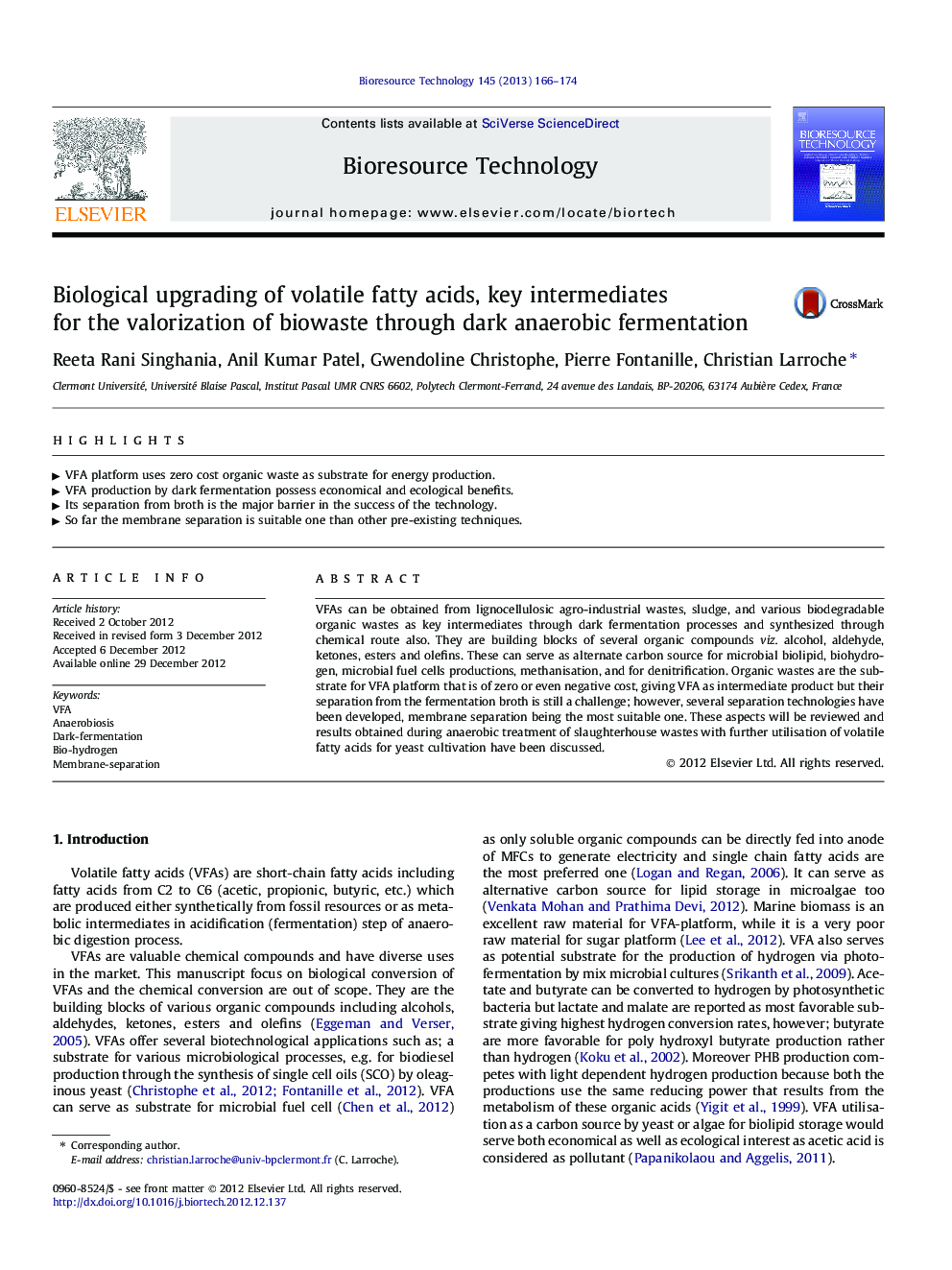| Article ID | Journal | Published Year | Pages | File Type |
|---|---|---|---|---|
| 681043 | Bioresource Technology | 2013 | 9 Pages |
VFAs can be obtained from lignocellulosic agro-industrial wastes, sludge, and various biodegradable organic wastes as key intermediates through dark fermentation processes and synthesized through chemical route also. They are building blocks of several organic compounds viz. alcohol, aldehyde, ketones, esters and olefins. These can serve as alternate carbon source for microbial biolipid, biohydrogen, microbial fuel cells productions, methanisation, and for denitrification. Organic wastes are the substrate for VFA platform that is of zero or even negative cost, giving VFA as intermediate product but their separation from the fermentation broth is still a challenge; however, several separation technologies have been developed, membrane separation being the most suitable one. These aspects will be reviewed and results obtained during anaerobic treatment of slaughterhouse wastes with further utilisation of volatile fatty acids for yeast cultivation have been discussed.
► VFA platform uses zero cost organic waste as substrate for energy production. ► VFA production by dark fermentation possess economical and ecological benefits. ► Its separation from broth is the major barrier in the success of the technology. ► So far the membrane separation is suitable one than other pre-existing techniques.
